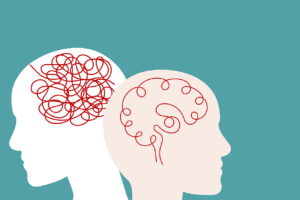
The benefits of walking
We all know that exercise is one of the greatest things you can do for your body and health. However, there is always something getting in the way of going to the gym. Maybe it’s too expensive to have a gym membership, or maybe the sounds of clanking iron and sights of Herculean creatures are a bit intimidating. Maybe weight training hurts your joints, or sometimes you just hate the stale, sweaty ambiance of the gym. I wish there was an alternative where you could get fresh air, enjoy some sunshine, say hello to friendly people, and protect your joints, all while getting a good exercise in.
Oh wait, there is: walking! Let’s go for a walk.
Physical benefits
People who regularly walk four times per week for at least 15 minutes live longer and healthier lives compared to those who are more sedentary, according to one study. Walking regularly helps maintain healthy body weight, reduce high blood pressure, decreases the risk for type 2 diabetes, and promotes a strong musculoskeletal system. Furthermore, walking actually helps decrease symptoms of chronic pain, which makes it a great activity for those with joint problems or low back pain. Taken together, we can probably understand why people who regularly walk live much healthier lives.
But there are other fascinating aspects of walking that don’t get much attention — and totally should!
Mental benefits
Soon after starting your walk, you begin to notice that your thoughts are calmer; your worries are erased, and you start observing the world in a different light. That fresh of breath of air flows in from the tip of your nose and expands your lungs; when you exhale, you release your stress away. You look up at the big blue sky, and see the clouds slowly walking with you. The leaves of the trees are rustling in the wind, and birds are flying around you.
There is something different about walking that induces a mindfulness state compared to other types of physical activity, but what could it be? While it is not completely understood, a group of scientists are beginning to believe that the body’s natural painkillers, produced by the endocannabinoid system, may play an important role in giving you that relaxing feeling you get from walking or other forms of exercise. Walking is such a strong mood enhancer that according to this study, higher levels of walking significantly decrease symptoms of stress, such as anxiety, sadness, fatigue, and lack of motivation.
Perhaps being outside rather than inside a sweaty gym may also explain the enhanced mood. Maybe, it’s that walking allows you to reflect and contemplate, unlike other forms of more vigorous exercise.
No need to stress about missing your yoga class or worry about feeling too sore — just go for a walk.
But wait, there’s more.
Walking can also be a social activity. Walking with a friend or your dog, or merely saying hello to other walkers, can increase your enjoyment. It can also be a learning activity, giving you a moment to listen to your favorite podcast or book and actually pay attention to it. Going for a walk does not cost any money, does not require a structured plan, and yet brings more benefits than you may have realized.
Happy walking!
ABOUT THE AUTHORS
Wenceslao (Wen) Martinez is a master’s student in the Translational Research on Aging and Chronic Disease Laboratory in CSU’s Department of Health and Exercise Science — and he really enjoys going for walks.





